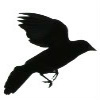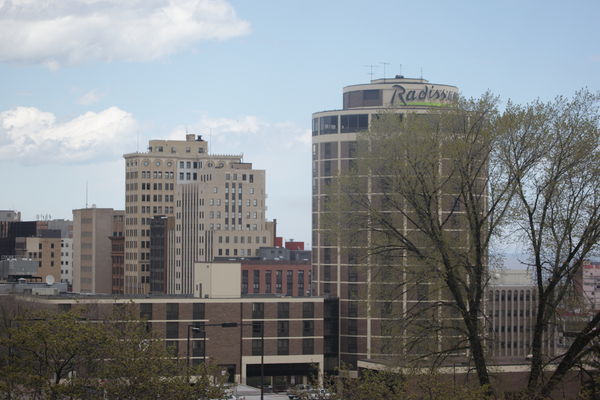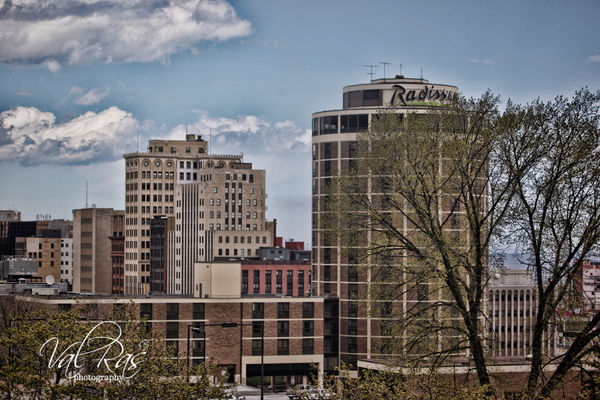"Fake" HDR using just one image
Jan 31, 2012 17:15:03 #
Jan 31, 2012 17:22:53 #
docrob wrote:
quote=Timarron quote=docrob quote=Timarron OK -... (show quote)
Ok, yes I agree with you about that. I guess my whole reason for starting this thing, was to point out that we can go back in our files and find a single image that was taken before we even had heard about HDR, and make a pseudo HDR image out of it. That is the beauty of some of the new applications available to us. We can resurrect some old photos and dink around with them to give them a new look.
HDR is a bit like Portrait Professional. In the right hands, you can create subtle changes to really enhance a photo. But, if you get a little lead-fingered on the sliders, you end up with something from another planet! This has, if nothing else, given some a new technique to try and at least generated some good discussion. That's what this place is all about....right bro?
Jan 31, 2012 17:32:23 #
Timarron wrote:
I took a single image and made two duplicates.
For fun is what its' about sometimes. So have at it. You didn't do too bad. Sadly, the image's resolution doesn't offer much for others to work with satisfactorily.
But, here is my rendition on a single image; not the way you did it.

Jan 31, 2012 17:40:22 #
arphot wrote:
For fun is what its' about sometimes. So have at it. You didn't do too bad. Sadly, the image's resolution doesn't offer much for others to work with satisfactorily.
But, here is my rendition on a single image; not the way you did it.
Timarron wrote:
I took a single image and made two duplicates.
For fun is what its' about sometimes. So have at it. You didn't do too bad. Sadly, the image's resolution doesn't offer much for others to work with satisfactorily.
But, here is my rendition on a single image; not the way you did it.
arphot - That is beautiful! I like it much better than mine actually. So what did you do, just take the original and tweak it in photoshop? Lovely job.... much more realistic.
Jan 31, 2012 17:47:18 #
Don Schaeffer
Loc: Winnipeg, Manitoba Canada
I really like what you did with these, made something special out of ordinary shots.
Jan 31, 2012 17:54:08 #
Jan 31, 2012 18:17:40 #
docrob wrote:
quote=Timarron quote=docrob quote=Timarron OK -... (show quote)
Not really sure what your intention was but its a great idea and I plan on trying it to see if it helps with the problem I had the last time I tried it.
Jan 31, 2012 18:24:36 #
Timarron wrote:
arphot - That is beautiful! I like it much better than mine actually. So what did you do, just take the original and tweak it in photoshop? Lovely job.... much more realistic.
I used the Topaz Adjust plugin to give it a little more zing. But like I said before, the res was low so there was little more I could do without making it a mind-blowing mess. Thanks for the kudos!
Jan 31, 2012 18:47:53 #
Jan 31, 2012 19:03:26 #
Nice job Val. Your changes make it pop. This little technique is going to turn a lot of my marginal photos into much more interesting ones.
Jan 31, 2012 19:08:28 #
Val wrote:
I just took a plain image, duplicated it, used topaz, HDR with one click.
Hi Val,
What is topaz?
Jan 31, 2012 19:26:44 #
What amuses me are the folks who rag about HDR pictures and then have no qualms about shopping out parts of an image that they are unhappy with having in the picture. I like your post processing, keep it up.
Jan 31, 2012 19:29:33 #
CAM1017 wrote:
Hi Val,
What is topaz?
Val wrote:
I just took a plain image, duplicated it, used topaz, HDR with one click.
Hi Val,
What is topaz?
It is a photoshop plugin.
Jan 31, 2012 19:29:50 #
Timarron wrote:
Nice job Val. Your changes make it pop. This little technique is going to turn a lot of my marginal photos into much more interesting ones.
:thumbup:
Jan 31, 2012 22:27:11 #
They are all awesome...How do you save to jpeg once the picture is created. I have photomatrix and have trouble saving it. Great idea thank you so much for sharing.
If you want to reply, then register here. Registration is free and your account is created instantly, so you can post right away.







